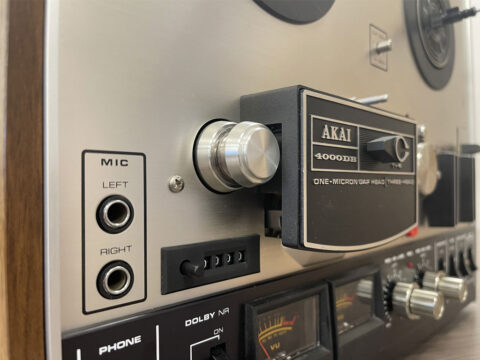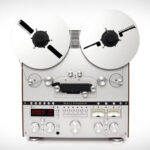Welcome to our in-depth guide on reel-to-reel calibration! If you’re a fan of analog recordings, you know how crucial it is to achieve high-quality sound. This is where calibration comes into play. Proper calibration of your reel-to-reel machine is essential in ensuring excellent sound quality and optimal performance. In this section, we’ll explore the significance of calibration in reel-to-reel recordings and how it impacts the overall audio output.
Throughout this article, we’ll delve into different aspects of reel-to-reel calibration, including what it entails, the effects of improper calibration, the calibration process, and the future of calibration in the digital age. So let’s dive right in and discover how reel-to-reel calibration can help you achieve unparalleled sound quality for your analog recordings!
Understanding Reel-to-Reel Calibration
Reel-to-reel calibration is a comprehensive process that involves adjusting various components of a reel-to-reel machine to ensure accurate and optimal performance. It is essential to achieving high-quality audio recordings that are free from distortion, noise, and other imperfections. The calibration process typically involves adjusting the playback heads, bias adjustment, tape tension, and speed control to ensure precise alignment and optimal recording and playback performance. This process is critical to achieving even frequency response, signal clarity, and overall sound quality.Components of a Reel-to-Reel Machine That Require Calibration
- Playback heads: These record and play back the audio signal and require accurate alignment to ensure optimal sound quality.
- Bias adjustment: Bias is the high-frequency signal added to the audio signal during recording to reduce distortion. Proper biasing is necessary to achieve the desired level of signal-to-noise ratio and dynamic range.
- Tape tension: Optimal tape tension is crucial to ensure smooth tape movement and minimize flutter, which can cause unwanted fluctuations in the audio signal.
- Speed control: Achieving precise speed control is essential to ensure accurate pitch and timing of the audio signal during recording and playback.
The Effects of Improper Calibration
When a reel-to-reel tape machine is not calibrated correctly, it can result in various issues that affect the sound quality and integrity of your recordings. The consequences of inaccurate calibration include:- Poor sound quality
- Distorted audio
- Uneven frequency response
- Signal degradation
The Calibration Process
The calibration process for reel-to-reel machines involves precise adjustments to various components to ensure optimal recording and playback performance. It requires specialized tools and technical expertise to achieve accurate alignment and calibration settings.Step 1: Prepare the machine
Before starting the calibration process, ensure the machine is in proper working condition. Check the belts and other components for wear and tear, clean the heads and tape path thoroughly to remove any debris or residue, and lubricate the moving parts to ensure smooth operation.Step 2: Playback head alignment
The first step in calibration is aligning the playback heads. This involves adjusting the azimuth and lateral angle to ensure accurate tracking of the tape. The technician uses an alignment tape and an oscilloscope to achieve precise alignment.Step 3: Bias adjustment
The next step is adjusting the bias current to optimize the high-frequency response of the machine. Bias is the alternating current that is applied to the tape during recording. The technician adjusts the bias level using an oscilloscope and a test tone generator to achieve the desired results.Step 4: Tape tension and speed control
Finally, the technician adjusts the tape tension and speed control to ensure proper tape-to-head contact and consistent speed during playback and recording. This involves using a magnetic field meter to measure the tape tension and adjusting the speed control to achieve the correct tape speed. The calibration process is labor-intensive and requires meticulous attention to detail to achieve accurate results. It is best performed by a professional with experience in reel-to-reel calibration to ensure the highest quality audio performance.The Advantages of Professional Reel-to-Reel Calibration
If you own a reel-to-reel machine, you may be tempted to attempt calibration on your own. However, it’s important to consider the advantages of seeking professional reel-to-reel calibration services. Firstly, professional calibration technicians have the technical expertise and experience necessary to ensure accurate calibration. Attempting to calibrate without proper knowledge and tools can lead to further damage to your machine and recordings. Additionally, professional calibration services have access to specialized equipment and tools that are required for high-quality reel-to-reel calibration. These tools are often expensive or difficult to acquire for individual use, making it more cost-effective to seek professional calibration. Moreover, professional calibration experts can identify and address potential issues that may not be apparent to an untrained eye. This can help avoid future problems and extend the lifespan of your reel-to-reel machine. Ultimately, while DIY calibration may seem like a cost-effective option, seeking professional reel-to-reel calibration services offers numerous benefits and ensures optimal performance and audio quality.The Calibration Process
To achieve high-quality reel-to-reel calibration, it is crucial to follow a step-by-step process with precision and attention to detail. The process typically involves a series of adjustments to various components of the machine to ensure optimal playback and recording performance. The tools and equipment required for calibration include alignment tapes, oscilloscopes, and magnetic field meters. The alignment tapes are used to set the playback and record head azimuth and height, while the oscilloscope is used to measure and adjust the bias and equalization settings. The magnetic field meter is used to measure and adjust the tape tension and speed control. The technique used to adjust the playback and recording parameters varies depending on the type of machine and the specific settings required. The process typically involves adjusting the calibration settings incrementally and testing the results with test tones and music recordings.Tips for High-Quality Reel-to-Reel Calibration
- Clean the machine regularly to prevent dust and dirt from affecting the calibration settings.
- Replace worn-out components, such as belts and rollers, to ensure accurate calibration.
- Periodically check and readjust calibration settings to maintain optimal performance.
- Monitor the machine for any signs of calibration issues, such as poor sound quality or distortion, and troubleshoot as needed.


















